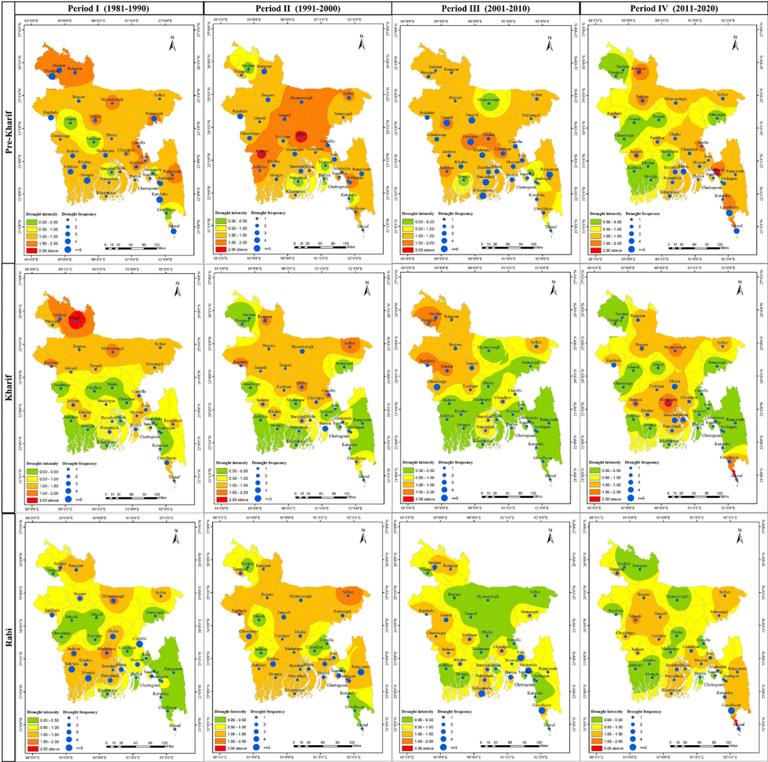The objective of this research is to determine the most effective machine learning methods and categorize the key factors influencing drought prediction. Utilizing a dataset spanning four decades of different weather variables, this study conducted extensive statistical analysis and employed data visualization techniques to gain insights from the data. This study explored a total of twenty-four machine learning models, encompassing both regression and classification approaches, which included linear, non-linear, and ensemble learning techniques. An inclusive assessment of the twenty-four models’ performance, by applying statistical metrics such as the R2, RMSE, and MAE method during the model validation phase. Results shows, four best ML methods, ranger, bagEarth, support vector machine, and random forest have been identified for the prediction of multi-scale drought indices. This study findings revealed that Bangladesh experienced varying levels of drought, ranging from moderate to severe and existing the shifting tendency by regions with specific deficits in average rainfall over different time periods. Temperature was identified as a crucial factor influencing drought conditions, with minimum, maximum, and mean temperatures exceeding certain thresholds resulting in severe drought conditions across different time spans. This information is valuable for understanding how temperature variations can impact drought severity. Additionally, this study observed that extended periods of sunshine hours and high relative humidity levels also contributed to drought conditions in the region. Low wind speeds and high evapotranspiration further exacerbated drought conditions.

Droughts pose a severe environmental risk in countries that rely heavily on agriculture, resulting in heightened levels of concern regarding food security and livelihood enhancement. Bangladesh is highly susceptible to environmental hazards, with droughts further exacerbating the precarious situation for its 170 million inhabitants. Therefore, this study are endeavouring to highlight the identification of the relative importance of climatic attributes and the estimation of the seasonal intensity and frequency of droughts in Bangladesh. With a period of forty years (1981–2020) of weather data, sophisticated machine learning (ML) methods were employed to classify 35 agroclimatic regions into dry or wet conditions using nine weather parameters, as determined by the Standardized Precipitation Evapotranspiration Index (SPEI). Out of 24 ML algorithms, the four best ML methods, ranger, bagEarth, support vector machine, and random forest (RF) have been identified for the prediction of multi-scale drought indices.
The RF classifier and the Boruta algorithms shows that water balance, precipitation, maximum and minimum temperature have a higher influence on drought intensity and occurrence across Bangladesh. The trend of spatio-temporal analysis indicates, drought intensity has decreased over time, but return time has increased. There was significant variation in changing the spatial nature of drought intensity. Spatially, the drought intensity shifted from the northern to central and southern zones of Bangladesh, which had an adverse impact on crop production and the livelihood of rural and urban households. So, this precise study has important implications for the understanding of drought prediction and how to best mitigate its impacts.
Additionally, the study emphasizes the need for better collaboration between relevant stakeholders, such as policymakers, researchers, communities, and local actors, to develop effective adaptation strategies and increase monitoring of weather conditions for the meticulous management of droughts in Bangladesh.
Sources:
Scientific reports
https://www.nature.com/articles/s41598-023-51111-2 .
Provided by the IKCEST Disaster Risk Reduction Knowledge Service System
Comment list ( 0 )
